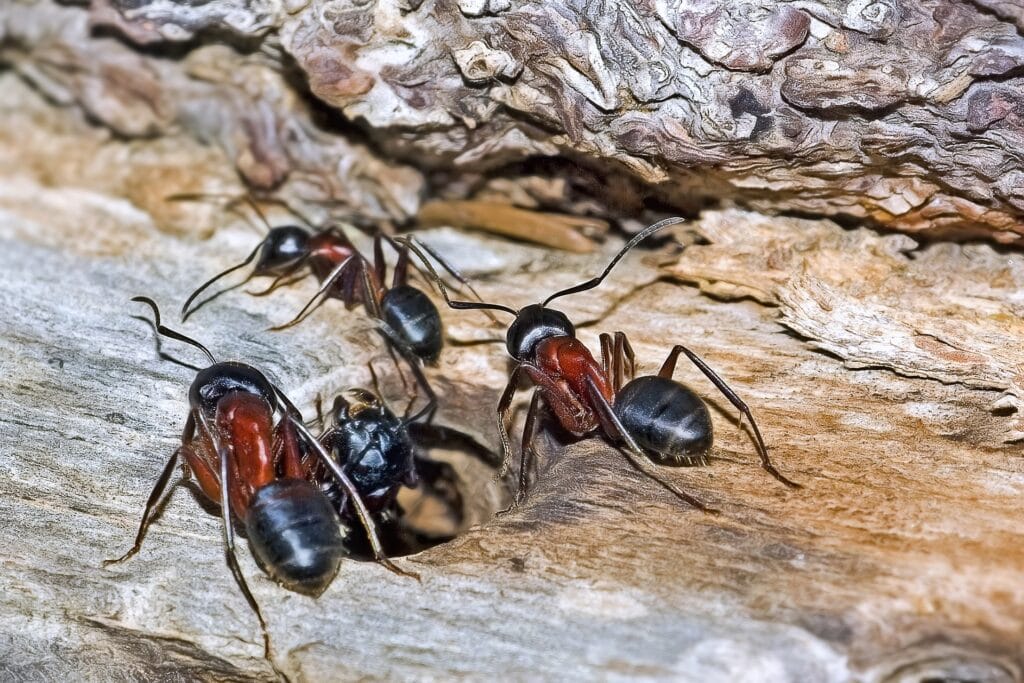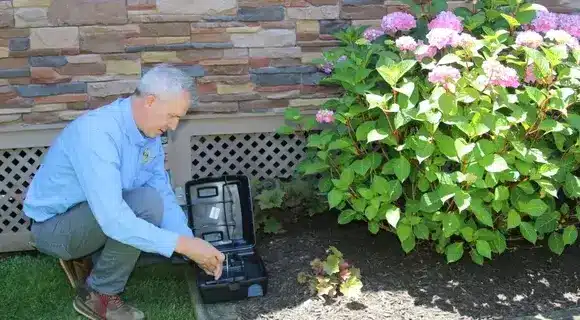


Ants are social insects that live in colonies with a caste system consisting of workers, soldiers, and queens. The colony can grow to massive numbers, ranging from a few dozen to millions. Ants communicate using pheromones, creating scent trails to food sources. Depending on the species, they may nest underground, in wood, or inside walls. Some ants, like carpenter ants, can be particularly destructive, tunneling through wood and weakening structures over time.
We take a two-step approach to eliminate ants and keep them from coming back:
Signs of an infestation include visible ant trails, piles of sawdust-like material (from carpenter ants), and food contamination in the kitchen. If you see ants frequently inside your home, they’ve likely established a colony nearby.
Food, moisture, and shelter. Ants are drawn to crumbs, sugary spills, pet food, and even water sources like leaky pipes. Keeping food sealed and fixing moisture issues can help reduce the risk of infestation.
Carpenter ants don’t eat wood like termites, but they tunnel through it, causing structural damage over time. If left untreated, they can weaken beams and supports in your home.
Not all ants can sting, but all ants can bite with their mandibles. Only female ants in certain species (about 71 genera) possess a stinger, which is actually a modified egg-laying organ. Famous stinging species include fire ants and bullet ants. Many species that can't sting compensate by spraying formic acid or using their powerful mandibles for defense. Some species, like carpenter ants, combine biting with spraying formic acid into the wound to increase the effectiveness of their defense.
Traditional sprays only kill the ants they touch, often causing the colony to relocate. We use non-repellent insecticides, which ants carry back to the nest, wiping out the entire colony at the source.
Our ant treatment plans start around $39/month, plus a one-time setup fee. The exact price depends on the severity of the infestation and the size of your home.
DIY ant treatments often provide temporary relief, but they don’t eliminate the colony. Over-the-counter sprays can actually make the problem worse by scattering ants, causing them to split into multiple nests (a process called budding).
It’s normal to see some activity in the first 7-10 days after treatment as the ants carry the insecticide back to the colony. If the problem persists, we’ll come back at no extra cost to ensure the issue is resolved.


